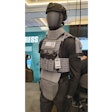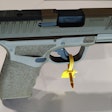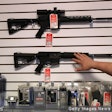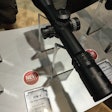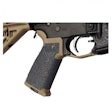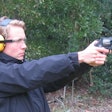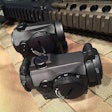If you aren't using a reliable magazine, you risk experiencing costly malfunctions including failures to feed a round from the magazine into the chamber. As a result, you could lose precious seconds in a gunfight to clear a malfunction.
As a general rule, factory magazines are excellent. This is generally the case with Glock — their factory magazines have a great reputation for quality and durability.
The 1911 pistols aren't as reliable. Most basic, GI-style 1911 magazines aren't up to the job at hand and end up in the bargain bins in gun shops. Those users who prefer 1911s usually replace generic magazines with ones manufactured by Wilson Combat, Chip McCormick, Kimber, and other reputable makers who tortured-test their products in battle and on the competitive shooting circuit.
My personal preference is Wilson Combat. After purchasing a 1911, I immediately buy Wilson's eight-round cap magazines and trade the generic GI models to the gun shop for trade equity toward ammo or gear. Wilson Combat is owned and staffed folks who have law enforcement, military, and shooting sports legacy in their blood. I trust products made by former cops and soldiers. I don't remember ever having a serious malfunction with one of their products and can recommend them without exception.
Mec-Gar, another excellent manufacturer of pistol magazines, produces magazines for Beretta, CZ, and SIG. Many of my military and law enforcement friends report that upon being issued a Beretta 92/Army M variant, they dump the cheap magazine supplied by the Army or the issuing agency and replace it with a Mec-Gar.
To sum it up, I choose factory mags for Glock, Wilson Combat for 1911s, and Mec-Gar for everything else. If you follow this basic rule, you've taken the first step in magazine upkeep.
The second step is cleaning. A magazine consists of five elements:
- The body/frame/jacket
- The floor plate (base)
- The internal spring(s)
- The follower (usually plastic and atop the spring)
- The lips (at the top edge of the body)
Most firearm owner's manuals cover magazine maintenance. It isn't always necessary to disassemble the entire magazine for cleaning after every range session, but it is necessary to wipe the follower and lips with a cotton patch or cloth after every range session.
Lead and carbon residue often cakes onto the lips and the follower since they are closest to the chamber when a discharge occurs. If the follower's shape and ability to lead the ammo into the chamber is compromised, then a failure to feed will occur.
I often see students at the range with magazines that have a thick layer of sticky black residue at the follower and lips. They often slip when loading ammo and fumble as the round meets the gooey caked-on residue.
Every few thousand rounds, you'll want to fully disassemble the magazine by removing the base, taking out the spring and follower, and then removing the internal lead or carbon deposits with a cotton patch or cloth.
This is an effective addition to whatever good maintenance pattern you employ. Adding this habit enhances safety and reliability, which is worth the extra effort.










